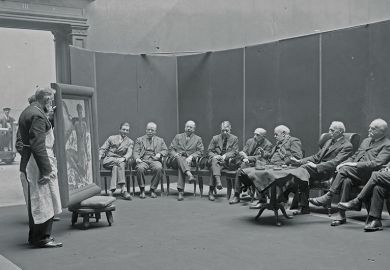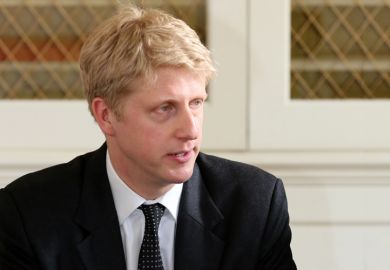Some undergraduates at UK universities receive almost five times as much teaching as those taking the same subject at a different institution, a new study claims.
In an analysis, researchers suggest that students receive massively different amounts of teaching resources depending on where they study.
Teaching intensity also differs hugely by subject, despite nearly all UK students at English universities paying the same tuition fees, says the study, titled "Class size at university", which was published on 31 July.
Drawing on data obtained from 67 universities using the Freedom of Information Act, the paper in the journal Fiscal Studies compares the volume of teaching and class sizes in economics, history and physics.
The number of contact hours is then weighted by class sizes to produce a measure of "teaching intensity", which is called Total Equivalent Adjusted Contact Hours (Teach).
One Teach is the equivalent of an hour’s one-to-one tuition – with the metric allowing a comparison of teaching delivered in very different ways, the authors state. The amount of teaching received by a history student taught exclusively in small group tutorials can, for example, be compared with the education received by a physics student taught by a mixture of lectures, seminars and laboratory work.
According to the information gathered by Mike Peacey, senior lecturer in economics at the New College of the Humanities, and Gervas Huxley, a teaching fellow in economics at the University of Bristol, economics students receive, on average, the equivalent of 26 hours’ one-to-one tuition over their entire course – which would translate into roughly £1,000 per hour of one-to-one contact.
History students fare little better and receive, on average, 33 hours of one-to-one tuition over their degree, whereas physics students receive 75 hours on average – with some getting as much as 185 hours.
Using the metric, the authors claim that some economics students receive almost five times as much Teach as those studying elsewhere.
The research is likely to inform the value for money agenda currently being pushed by universities minister Jo Johnson. It was cited in a Department for Education document, released on 20 July, which outlined plans for an “exploratory pilot” for a teaching intensity metric in the subject-level teaching excellence framework, and adopts a similar approach to the issue.
The study finds that Russell Group institutions provide the biggest variations across the disciplines. In physics, Russell Group universities provide 60 per cent more Teach per degree than non-Russell Group universities.
For economics and history, this result is reversed, with Russell Group universities providing 38 per cent fewer Teach per degree than non-Russell Group universities.
In a briefing note on their findings, the research team behind the report states that “some students are receiving much better value for money than others".
“The enormous variation in teaching intensity found in our data strongly suggests that in the market for teaching price signals are weak,” they say, adding that “the absence of information about teaching intensity (as opposed to contact hours) [means] school leavers have no way to choose between those universities offering more (or less) of the tuition service they are ultimately paying for".
“We believe that widespread adoption of our metric would help to create a more competitive environment for both students and universities and a more effectively functioning market for higher education,” the briefing says.
Register to continue
Why register?
- Registration is free and only takes a moment
- Once registered, you can read 3 articles a month
- Sign up for our newsletter
Subscribe
Or subscribe for unlimited access to:
- Unlimited access to news, views, insights & reviews
- Digital editions
- Digital access to THE’s university and college rankings analysis
Already registered or a current subscriber?










